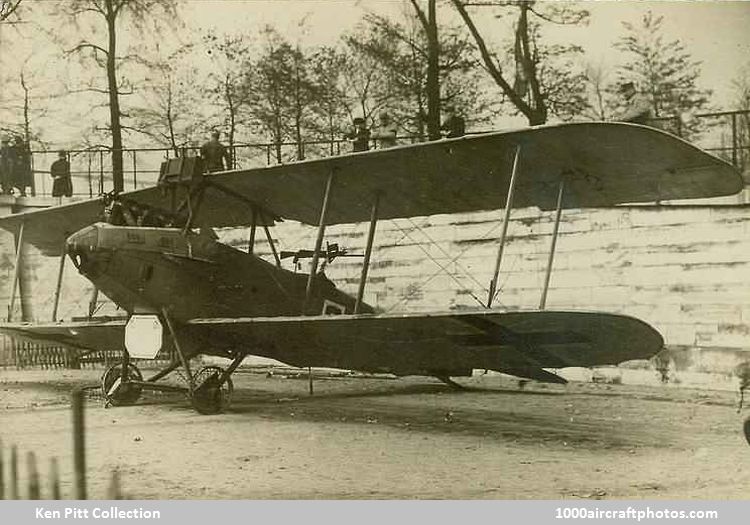07/31/2012. Remarks by Johan Visschedijk: "The DFW C.V, one of the finest German two-seat types to be used during WW I, was preceded in service by the C.IV of generally similar appearance. Authorities differ in regard to the extent in which the C.IV was produced, and its operational record was certainly overshadowed by that of the more widespread C.V. However, it is certain that among the 2340 C-types produced by DFW during the war period the C.IV and C.V were the pre-dominant models.
The basic airframe, designed by Heinrich Oelerich, was common to both aircraft, the C.IV having a neatly installed 150 hp Benz Bz III engine with a radiator mounted flush in the top wing. Its rudder and elevator surfaces were non-balanced, and the fin and tail plane structures were more triangular than those of the C.V. The C.IV first appeared in spring 1916 and was subsequently built by both DFW and Aviatik for both German air services.
The C.V (factory designation T 29) was built by Aviatik, Halberstadt and LVG, in addition to the parent company. It differed principally in having the uprated Bz IV engine (some later aircraft were fitted with 185 hp Neue Automobil-Gesellschaft (N.A.G.) C.IIIs and was at first fitted with Windhoff side radiators. A single box-type leading edge radiator was fitted to later C.Vs, and the propeller was fitted with a small spinner. Tail contours were more rounded, and the elevator and rudder surfaces balanced.
The C.V went into service on the Western Front in late summer 1916, subsequently appearing in Italy, Macedonia and Palestine. It continued to be used in France throughout 1917 and the early part of 1918, and about 600 C.Vs were still in service on all Fronts when the war ended. The type handled well and was very popular with its crews, and its performance, at high or low level, was excellent for an aeroplane in its class. Its duties included artillery co-operation and infantry contact patrol, and visual and photographic reconnaissance.
The C.V possessed a high degree of maneuverability, and with an experienced crew aboard could out-maneuver even the late-war Allied fighters. RFC Major J.T. McCudden, in his book 'Five Years in the Royal Flying Corps', admits having to give best to a DFW that evaded his every attempt in his S.E.5a to shoot it down in 1917.
Of the C.Vs that fell into Allied hands at the time of the Armistice some 25 to 30 were acquired by Belgium, where the type was used for some time for pilot training. On June 17, 1919 a DFW C.V established a world altitude record for an aeroplane of its class by flying to 31,562 ft (9,620 m). The C.VI, which appeared in 1918, remained a prototype only. This aircraft had a 220 hp Benz Bz IVa engine, overhung, balanced ailerons and a redesigned tail unit."
